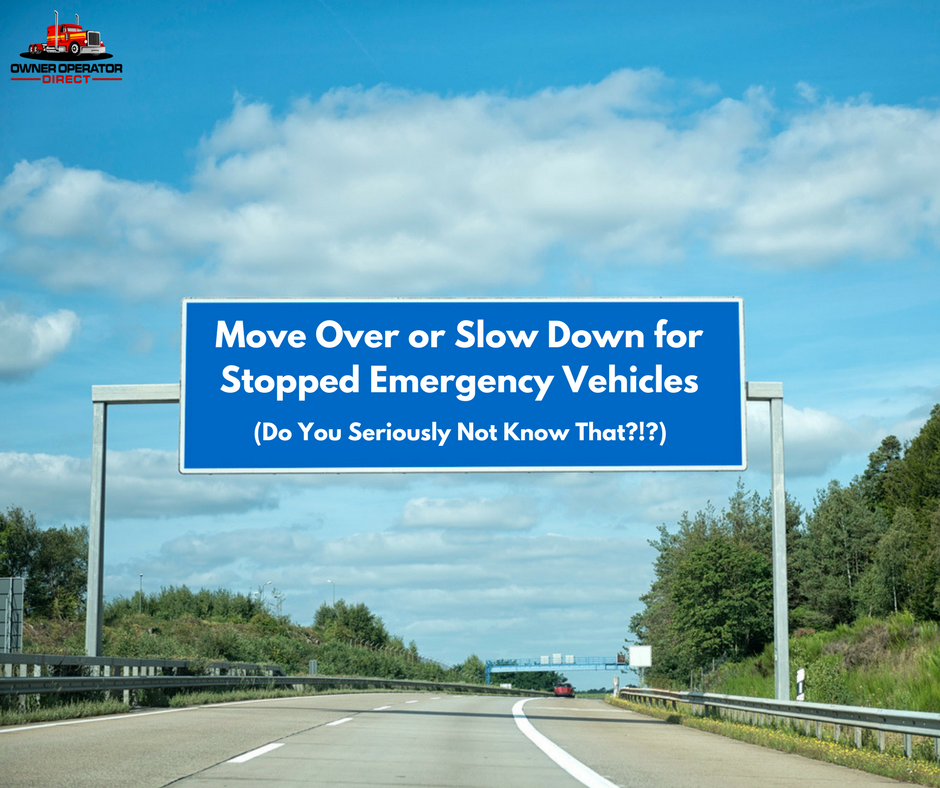The Move Over Law - Why Don't People Know About It?
EVERY YEAR, first responders are killed or injured while providing emergency services on the side of the nation’s roadways.
On average, one tow truck driver is killed every six days, one law enforcement officer is killed every month, and five firefighters die annually after being struck by passing vehicles.
In 2012, Hawaii was the 50th state to sign on to the legislation known as the “Move Over” law, making the entire nation responsible for slowing down and, if possible, moving directly into the left hand lane to give safe clearance to law enforcement officers, firefighters, ambulances, and in some cases, tow truck drivers. Washington, D.C., is the only exception.
But despite the safety potential of these laws, the word hasn’t gotten out to everyone. Nearly 30% of the public are not aware of Move Over laws, and traffic-related incidents continue to be the number one cause of death among on-duty law enforcement officers.
Failing to heed the laws can result in fines and serious criminal charges if someone is killed.
Despite the laws, safety experts say many drivers remain ignorant of them and that states need to do a better job of educating motorists about what’s at stake.
With the summer months fast approaching and the increased traffic that the warm weather brings, law enforcement partners and the National Highway Transportation Safety Administration (NHTSA) are working to increase awareness of these life-saving Move Over laws, and highlight the need to protect public safety professionals who place themselves at risk to protect motorists.
While the Move Over Law is effective in all 50 states, it is apparent from these statistics that far too many drivers are violating the law on a daily basis.
What is the Move Over Law?
The Move Over Law is designed to protect emergency responders and other workers stopped along roadways while performing their duties. The extent of whom the law protects varies by state. Traditionally, the law required drivers to yield to police, fire and emergency vehicles, but some states have expanded the law to provide the same protection to others, such as tow truck operators, utility crews, DOT personnel and sanitation workers.
Generally speaking, the law requires drivers to do one of two things when approaching a stationary emergency or maintenance vehicle with flashing lights pulled to the side of the road:
Move out of the lane immediately adjacent to the emergency or maintenance vehicle, unless traffic or other hazards exist to prevent safely doing so, or...
If the road does not offer multiple lanes or it is not safe to change lanes, the driver must slow down to a reasonable or specific speed limit, depending upon local laws.
Since the specifics of the Move Over Law varies from state to state, it’s important to be familiar with the laws within the states you travel.
Failure to comply can result in fines, license suspension, jail time or a combination of all three. Select the corresponding state on the Move Over America website for a brief description of penalties by state, or contact the local department of motor vehicles for up-to-date information regarding the laws where you drive.
If you see emergency vehicles on the shoulder of the road, slow down, and if safe, move to the left lane.
The Origin of the Move Over Law
The first Move Over Law in the United States was passed in South Carolina in 1996, after a paramedic was seriously injured by a passing motor vehicle. In the early morning hours of January 28, 1994, paramedic James Garcia was checking on a driver whose car had slid off the side of Highway 6 between Gilbert and Lexington.
The driver was okay, but as Garcia entered the road near his ambulance, he was struck by a rubbernecking motorist traveling at about 45 mph. Two years after the accident that left him with a broken left arm and leg, Garcia was able to get a state law passed requiring motorists to use extra caution when passing emergency scenes where lights are flashing.
In the years following the accident, he lobbied extensively, encouraging other states to pass similar measures.
By 2012, all 50 states had adopted similar laws. Garcia has also been working with the federal government on standards and practices that improve the safety of accident scenes.
Protect Those Who Protect You
Emergency vehicles parked beside a highway are vulnerable to crashes, even when their emergency lights are flashing. In fact, thirty percent of all crashes occur as a result of another crash. Move Over Laws provide a buffer lane for emergency vehicles parked on the roadway shoulder and the personnel working there, and actually reduce the risk of another crash.
When the required clearance is given to roadside emergency vehicles, the margin of safety is increased, not only for public safety and emergency personnel, but also for motorists and their passengers.
So, remember that whenever you see flashing lights on the side of the road, slow down, and if it’s safe, Move Over – away from police, fire crews, paramedics and tow truck drivers. If you make the move, others will follow.
Owner Operator Direct provides top notch commercial trucking insurance to owner operators, whether operating with authority or as leased drivers. For a no-obligation quote, give us a ring at 800-499-1044 (Monday-Friday 9-5 pm ET) or answer some questions online and we'll email you one.


